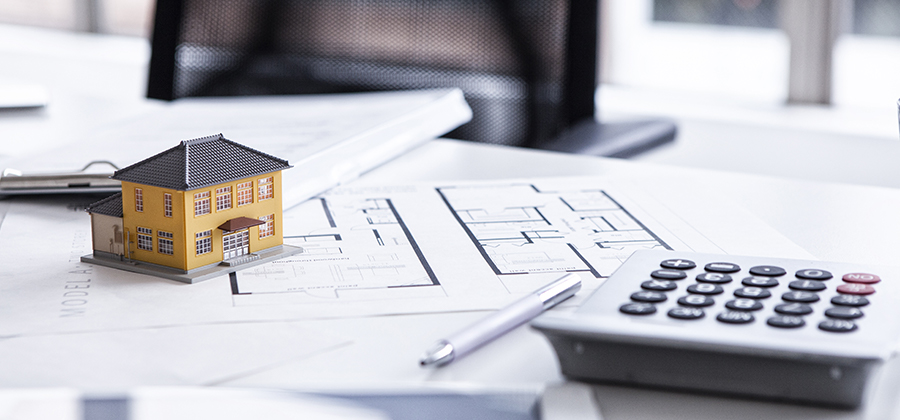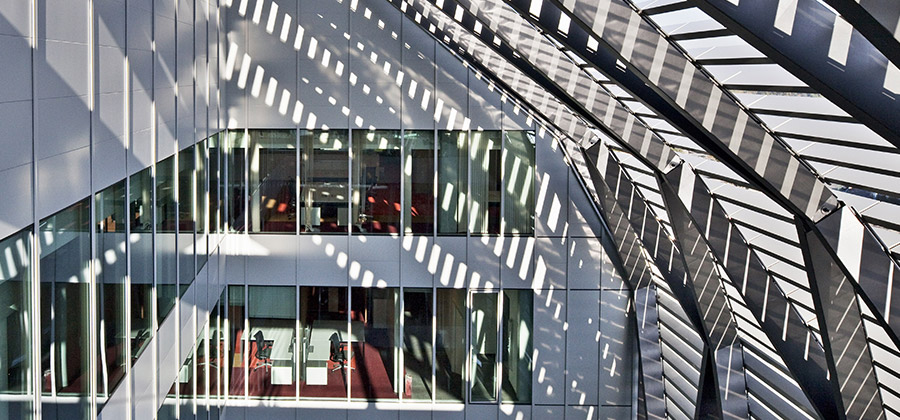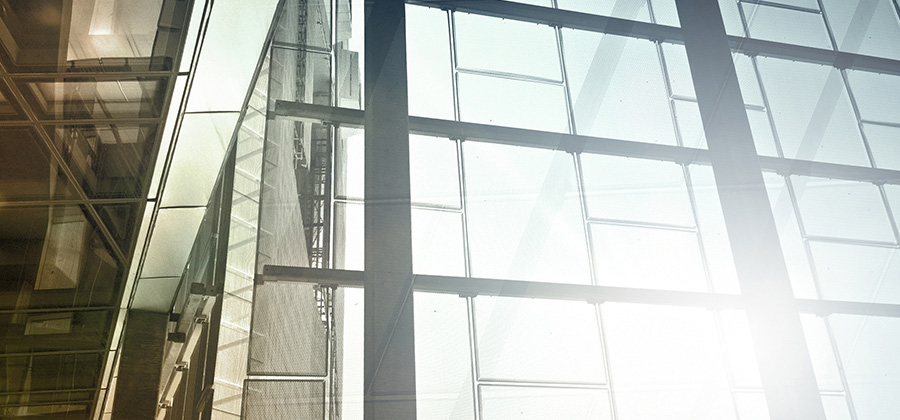Cost control is still the number one priority for most organisations. The rent is just one factor in this.

In Belgium, there are clear differences in rents depending on the location. In the most sought after business district of Brussels (the CBD or Central Business District), you can expect to pay around 260 Euros per m² annually for better properties. The same office building in the outskirts of Brussels or in Flanders or Wallonia might cost you 145 Euros per m² annually. However, it's important to realise that the rent is only one aspect of the total rental cost. Frédéric Van de Putte, CEO BNP Paribas Real Estate:
"As well as the monthly rent, there are two other costs to consider. First, there are taxes. As a tenant in Brussels, as well as the federal tax, in other words the property tax, you also have to pay regional and municipal taxes. In Flanders and Wallonia regional and municipal taxes don't exist, so tenants only have to pay the property tax. Depending on the municipality in which your office is located, this can make a difference of between 10 and 25 Euros per m² per year.”
The second other cost is the general charges associated with rental, such as heating, ventilation, air-conditioning, maintenance of the communal areas and the general building services (e.g. manned reception, security, concierge, catering etc.). According to Van de Putte, these costs can be anything from 30 Euros per m² per year to 70 Euros per m² per year:
"A recent trend is that organisations not only look at the rent but also take into consideration these local taxes and general rental costs."
Cost control is the number one priority
When asked what was the top priority in their real estate policy, 61% of respondents in the User Insight 2016 survey said the cost. Other priorities trailed behind. For 29%, priority number one was: adapting the building to the strategy of the organisation (e.g. location, floor space, services etc.). Only 8% said sustainability. Frédéric Van de Putte:
“Awareness of the importance of sustainability is growing, particularly among large companies and government bodies. But often users are not yet willing to invest in it or to pay for it. They expect the owner to pay for it."
The ideal property
According to those who took part in the User Insight 2016 survey, the ideal business premises are:
- New
- Suitably priced
- Energy efficient
- Readily accessible
- Rentable under a 3-6-9 lease
- Flexible
- Suited to the way they work
In other words, few and far between...
30.05.2016
Company buildings: renting remains the most popular option
The rental market dominates the real estate sector. The main factor here is flexibility: renting gives you the freedom to grow, shrink or relocate.
According to the annual survey carried out at the end of 2015 by the market research group Ipsos on behalf of BNP Paribas Real Estate, the vast majority of companies lease the building where their employees work. The survey (User Insight 2016) was completed by the decision-makers of large companies in various sectors and a number of government bodies in France.
Frédéric Van de Putte, CEO of BNP Paribas Real Estate, says the situation on the Belgian market is pretty similar:
"The real estate market is a rental market: the vast majority of companies would rather rent than buy. Flexibility is the main factor here. It's very difficult to predict more than a couple of years in advance what the organisation's requirements will be in five years' time. How many employees will you need? And where? Will you grow or shrink? Renting gives you the freedom to respond to all these unknown factors."
Buying is still the exception
Buying is still the exception but it may be an option for some users. Mature companies with a very stable business model venture to take this step when a good opportunity presents itself. Frédéric Van de Putte:
"SMEs involved in industry or manufacturing (in the semi-industrial and logistics sectors) may also be candidates for buying rather than renting. After all, they already purchase their tools and equipment."
Renegotiating the lease: day-to-day costs
Businesses and organisations can contact BNP Paribas Real Estate for advice on this. They will analyse the company's requirements, carry out an audit of the buildings and prepare a "stay or move" analysis. However, even if the outcome of the analysis is "move", many tenants still choose the "stay" scenario... Frédéric Van de Putte:
"There's a lot of talk about location, centralisation, optimisation, sustainability... but price is often still the deciding factor. Currently, about half of our work on the rental market involves renegotiating leases. Downwards, of course (laughs).
Although the tenant and the landlord have different perspectives, they still meet each other half way. The tenant takes a short-term perspective. It wants to pay the minimum rent possible and retain the flexibility and freedom to relocate if and when it suits its business.
The landlord takes an investment based approach and sees the situation from a long-term perspective. It wants to keep the tenant in the long term. In order to achieve this objective, it is willing to make concessions over rental income. For example, it might propose a lease term of 6 or 9 years rather than 3 years in exchange for a significant discount. This may be one to three months' free rent a year. So, in 9 years' time, it may be 27 months' free rent."
BNP Paribas Real Estate helps real estate users renegotiate their lease or look for a new building. The fee is often a percentage of the total savings made by the client.
30.05.2016
Efficiency: more people in a smaller area
How efficient is your building? In other words, how much floor space do you need to accommodate your employees?

As well as the total cost of renting, including general charges and local taxes, in the last five years, an increasing amount of attention has been paid to the efficiency of the building. In other words, how much floor space do you need for how many employees? Open-plan offices with flexible working save a lot of floor space and, as a result, a lot of money. Frédéric Van de Putte, CEO BNP Paribas Real Estate:
"Traditionally, it was reasonable to assume a ratio of 20 to 25 m² gross per employee. At that time, many people worked in separate, enclosed offices and a building had to have a huge reception area. Nowadays, with the trend for open-plan offices, this has been reduced to a ratio of about 15 m² gross per employee. More and more companies are introducing flexible working systems, which assume that not all employees will be in the office at all times of the day. Teleworking will reinforce this effect."
Older buildings have a poor gross-net ratio
The gross-net ratio is the difference between the number of useful square metres in a building and the total number of square metres. The difference primarily lies in the communal areas (e.g. reception, lifts, foyers, corridors and technical rooms). This ratio is usually poor in older buildings, where huge amounts of money often have to be spent on these communal areas. Frédéric Van de Putte:
"A typical example of this is the grandiose properties that are often used by firms of solicitors or notaries. These often look impressive but they are generally very inefficient in terms of their gross-net ratio. Large stairwells, wide corridors and poorly divided spaces often mean that the number of square metres that can actually be used is limited.
Many organisations have to contend with such problems, particularly in older buildings. Often, they don't have the financial resources to upgrade them to meet modern-day requirements. We advise our clients to optimise their premises with the help of a space planning analysis and an audit of the building. Sometimes we advise the tenant or owner that it would be best to relocate.”
Location continues to be a top priority for real estate: however, according to the User Insight survey, a less favourable location has little impact on the satisfaction of companies that rent real estate. The main negative factors are too high a rent, poor technical performance and the layout of the rooms not being compatible with the organisation's requirements.
Investing in real estate today
- Office buildings (which account for 75% of the total investment volume) are still the biggest market for investors. The other sectors, such as retail and warehousing, are still a niche market.
- The dominant market is still Brussels CBD (Central Business District). Large, institutional investors are still cautious about buying outside Brussels. This is due to the lack of maturity of the "peripheral" office markets (healthy take-up, price transparency, stability of the market in general). Consequently, investments outside Brussels are mainly in dynamic locations close to public transport and involve institutional and other investors who are based locally.
- The return on investment depends on the type of building, the location and the leases. An office building in an excellent location with a long-term lease (more than nine years) may provide an ROI of up to 5%. In the retail sector, returns on investment are somewhat under pressure, particularly in the case of high street locations. In the warehousing and logistics sector, the best returns on investment hover around 7.25%.
30.05.2016
Sustainable buildings: more than saving energy
Sustainability isn't just about investing in energy. The location of the workplace is also an important environmental choice.
Traditionally, the top 3 priorities for real estate are: location, location, location. This may seem an exaggeration but location will continue to be an essential factor in the future too. Accessibility by public transport in particular is a key requirement. Currently, many Belgian employees are still given a company car due to the associated tax benefits: far less taxes and social security contributions are levied on a company car than are levied on gross pay. This has resulted in 650,000 company cars being driven in Belgium. About 50% of highly qualified individuals entering the job market can expect to be given a company car.
The question is whether this will continue. All these company cars make for more congestion on the roads and are harmful to the environment. If Belgium follows the international trend, the number of company cars will decrease. As a result, more and more employees will commute to and from work by train, underground, bus or tram. If they live near their work, they'll receive a bonus if they cycle to work or use an electric bike to get to work. If necessary, they can use a car-sharing scheme, such as that provided by Cambio, at their employer's expense.
Workplaces that are easily accessible by public transport or by bike will therefore save time, reduce congestion and reduce emissions of CO2. The value of this type of building will also be higher than that of a comparable building that is only accessible by car. So, location is also an important factor in terms of sustainability.
Sustainable choices
According to Quentin Nerincx (Sustainable Energy Adviser BNP Paribas Fortis), as well as location, many other factors may have an impact on the sustainability of commercial and government premises:
"There are a lot of factors involved. Take the choice of building materials, for example. In a passive building, you need hardly any or no heating and air-conditioning. But it wouldn't be so sustainable if the wood for the window frames involved destroying part of the rain forest on the other side of the world. An FSC label tells you whether the wood comes from a sustainable source. Consideration may also be given to options for recycling used building materials in the future. And the management of waste and water is also an important factor for sustainability."
Companies and organisations that build new premises or make alterations to existing premises are having to contend with ever more stringent regulations. And it's not just about saving on heating and electricity either. For example, the government is increasingly requiring rainwater to be collected in containers and re-used in toilets or for cleaning. Where water from a roof exceeds the amount that can be re-used (architects have modules to calculate this), new techniques are increasingly being used to buffer this water and delay its entry into the drains (e.g. through the use of a green roof) or the water table (through underground filtration boxes). Quentin Nerincx:
"We mustn't kid ourselves that the savings we make from sustainability measures will cover all these investments. Currently, a building that is genuinely sustainable still always costs more than a non-sustainable building."
30.05.2016
Some quick tips for constructing and converting buildings sustainably
To what extent do your buildings already embrace the sustainability approach of the future?

Construction tips
- Sustainable new construction is more expensive than conventional new construction but you can certainly keep the additional costs involved to a minimum. Provided you select experienced architects and contractors who are familiar with these state-of-the-art techniques. You can find examples and reviews on various websites for Flanders, Wallonia and Brussels.
- From 2020 onwards, all new build projects must be NZEB (Nearly Zero Energy Building) certified. It's a good idea to start working towards these standards now. Otherwise, you risk the building losing a lot of its value in the future. Moreover, making alterations at a later date is always more expensive than building in accordance with the 2020 standards straight away.
- Sustainable building is about more than just building in an energy efficient way. Other sustainability factors to consider are: materials, location, environmental impact, waste processing, water management etc. A new building which is genuinely sustainable in all these respects will be more expensive.
- In addition to energy savings, the main benefit of a sustainable building is the feeling of comfort. The temperature is pleasant everywhere, even near walls and windows.
- BREEAM is a tool that's commonly used to measure and assess the sustainability of buildings and projects. NB: a BREEAM certificate has different levels. "Good" will not single you out from the rest. Only "Very Good" or "Excellent" is a sign of quality and will increase the value of the building. The re-sale value of a building of this type with a certificate will increase by between 2% and 17% and the rental income will increase by between 5.8% and 35%.
Conversion tips
The five tips for sustainable construction also apply to alterations. With one major difference: the cost.
- In general, the alterations needed to convert an existing building into a low energy or passive building are expensive. Consequently, the return on investment is long term: 20 to 30 years for a private detached house. Fortunately, the situation with regard to apartment buildings (and consequently also office buildings) is more encouraging. Buildings of this type are better suited to a sustainable makeover.
- In the case of sustainable alterations, a great deal of attention must be paid to the avoidance of "building nodes" (the new name for thermal or cold bridges), since they can cause condensation and dampness and can give the building a clammy feel.
- Sustainable alterations means: thorough insulation. But don't forget to make sure there's sufficient ventilation.
